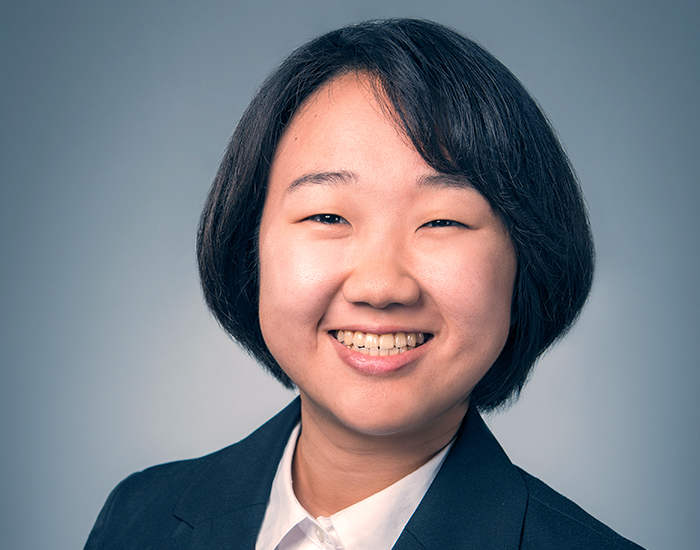Keck Graduate Institute Master of Science in Applied Life Sciences (MS) student Yuu Ohno, MS ’22, recently secured first authorship for the publication Full- versus Sub-Regional Quantification of Amyloid-Beta Load on Mouse Brain Sections, which appeared in JoVE journal. This methods paper builds upon Ohno’s thesis, which examines potential treatments for Alzheimer’s Disease (AD).
“I was drawn to studying Alzheimer’s specifically because I lost my grandmother to Alzheimer’s after a long battle with it,” Ohno said. “The current therapeutic options for Alzheimer’s are quite limited, and most regimens are focused on treating the symptoms versus treating the disease.”
AD is characterized by the accumulation of amyloid-beta (Aβ) plaques—abnormally configured proteins that form in the spaces between nerve cells—and intraneuronal neurofibrillary tau tangles, which block the neuron’s transport system. Tumor necrosis factor alpha (TNF-α), a proinflammatory cytokine, has been identified as a potential molecular drug target in AD, as it contributes to excessive neuroinflammation.
Currently, the market offers a number of approved biologics for autoimmune conditions that aim to inhibit TNF-α and thus reduce inflammation. However, they have limited applicability for Alzheimer’s, largely due to the blood-brain barrier prohibiting the passage of biologics.
Ohno assisted former KGI professor Dr. Rachita Sumbria’s lab with a project that focused on improving drug delivery through engineering a fusion protein that allows for the drug to bypass the blood-brain barrier. It accomplishes this using a molecular trojan horse, which forms a fusion antibody capable of receptor-mediated transport.
Prior studies conducted by Sumbria involving therapeutic interventions in mice showed promising results for the fusion protein, which demonstrated better outcomes when compared to a non-modified TNF-α inhibitor. She found a significant reduction in Aβ plaques, neuroinflammatory marker intercellular adhesion molecule-1 (ICAM-1), and blood-brain barrier damage marker parenchymal immunoglobulin-G (IgG), along with improved recognition memory.
Ohno’s thesis built upon these studies, focusing on delayed treatment.
“In my thesis, we assess whether fusion protein treatment is effective under delayed treatment conditions, and by collecting this data, we aim to have a better understanding of the most appropriate therapeutic time window,” Ohno said. “The specific parameters analyzed include the spatial reference memory, amyloid plaque, and amyloid peptide load.”
Overall, delayed treatment with the fusion protein demonstrated effectiveness in reducing Aβ pathology and improved spatial reference memory as previously seen in 6-month-old APP/PS1 mice.
Expanding on her thesis, the main purpose of Ohno’s publication—which she co-authored with Sumbria, Riley Murphy, Weijun Ou, and Matthew Choi— was to run a statistical analysis testing the correlation levels between analyzing a full region of the brain and a sub-region of the brain.
“The method we use to examine the accumulation of amyloid-beta plaques has been well established, but there has not been a previous analysis on whether the data collected differs between whether you use a full-region or sub-region analysis,” Ohno said. “Our results demonstrated a high correlation, meaning researchers can decide to use the full region or sub-regional analysis and extract equally reliable data, possibly optimizing their data analysis process according to need.”
During her time at KGI, some faculty that Ohno has particularly loved learning from include Dr. Anastasia Levitin, Dr. Travis Schlappi, Dr. Angelika Niemz, Dr. Mikhail Shilman, and Dr. Nicholas Gorman.
“They all genuinely care about their students and are very approachable,” Ohno said. “It was a fortune to have them as mentors, and I feel like they have given me examples of how helpful professors can be in expanding your knowledge and professionalism.”
She feels that KGI’s classes are unique in that they teach applicable skills that she can carry on with her long after graduation.
“Additionally, you meet classmates that come from different walks of life who help you learn different perspectives,” Ohno said.
Currently, Ohno’s goal is to become a pediatric surgeon. She eagerly anticipates starting medical school in July.
“I am proud of Yuu, who was able to secure the first authorship in a peer-reviewed publication in a relatively short time doing research at KGI,” said Levitin, KGI professor of practice in translational medicine. “I am lucky to be surrounded by students like Yuu. With their love for research, innovative spirit, and the ability to ‘think outside of the box,’ these graduates will succeed in evolving the healthcare sector and bringing researchers’ expertise to improve patients’ lives.”
